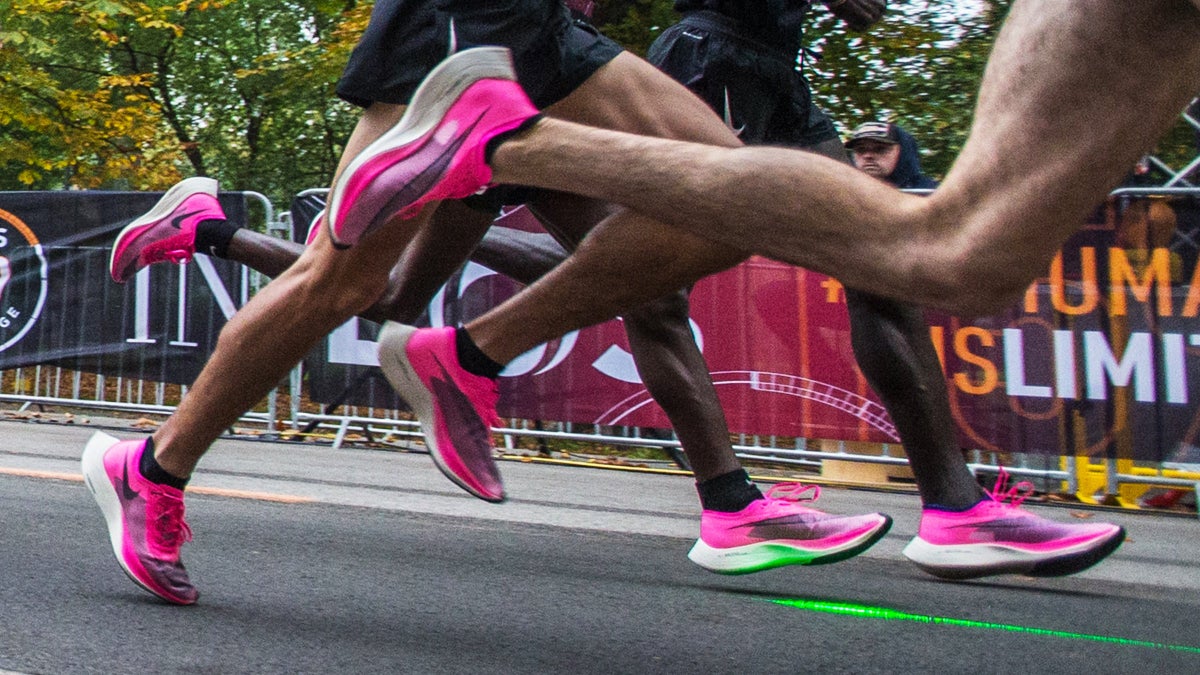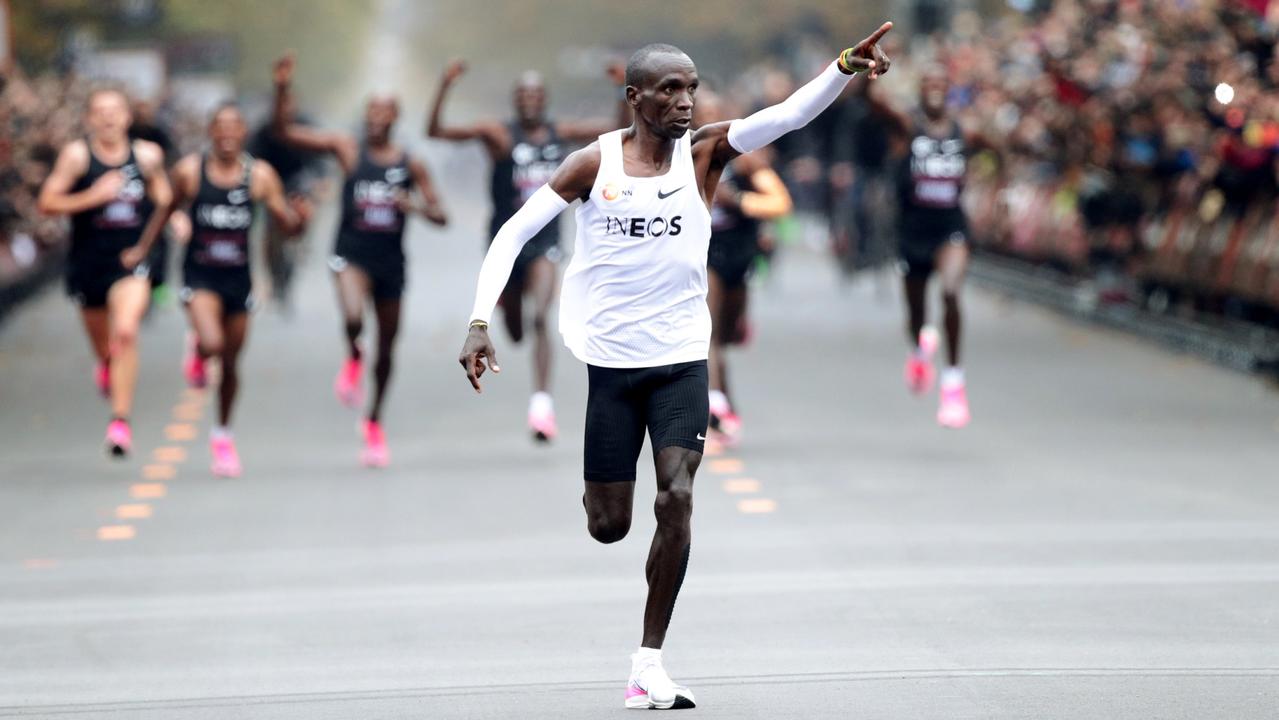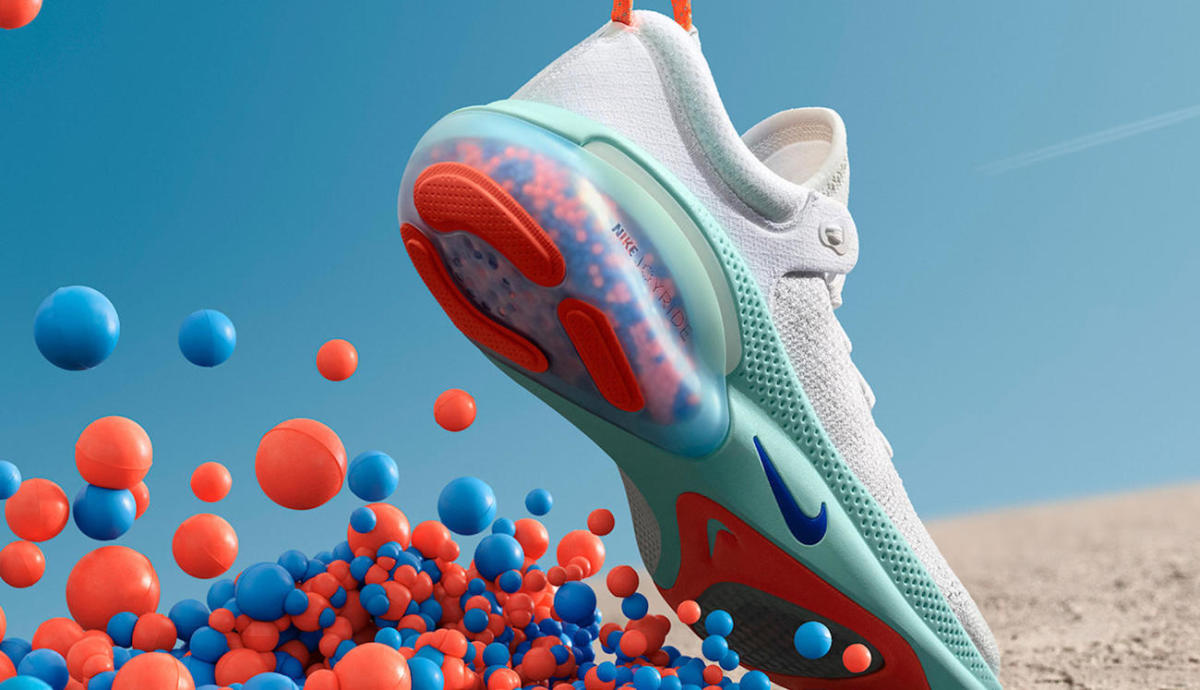Nike, a globally renowned sportswear brand, has solidified its position as a leader in the athletic industry. Since its establishment in 1964, Nike has consistently prioritized innovation, performance, and excellence. The brand offers a comprehensive range of products, including footwear, apparel, and equipment, catering to athletes across various sports and activity levels. Nike’s success can be attributed to its unwavering dedication to meeting athletes’ evolving needs, leveraging cutting-edge technologies, and forging collaborations with top athletes and teams. Through captivating marketing campaigns and strategic partnerships, Nike has cultivated a powerful brand that resonates with consumers worldwide, embodying the spirit of athletic achievement and inspiring individuals to unleash their full potential.
Biomechanics, the study of human movement, serves as a fundamental pillar in Nike’s sportswear design and development. By incorporating biomechanical insights, Nike strives to enhance performance, comfort, and injury prevention in their products. Beyond optimizing these aspects, Nike’s integration of biomechanics in sportswear design also enables individual customization and personalization. By comprehending the intricate nuances of how individuals move and their unique biomechanical characteristics, Nike can tailor sportswear to specific needs and preferences. This may involve incorporating adjustable features, customizable components, and tailored support systems, ensuring a precise fit and optimal performance for athletes of different body types, playing styles, and performance levels. By leveraging biomechanics in this manner, Nike empowers athletes to unlock their full potential by providing sportswear that aligns with their biomechanical profiles, elevating their overall athletic experience.
The Science of Biomechanics
Biomechanics delves into the intricate relationship between the human body and physical movement, aiming to unravel the mechanics of human performance. It explores how forces are generated, transmitted, and absorbed within the body during athletic activities. By analyzing factors such as joint angles, muscle activation patterns, and ground reaction forces, researchers gain valuable insights into optimal movement patterns and areas for improvement.
In-depth biomechanical investigations involve meticulous analysis of joint angles and muscle activation patterns across various athletic activities. By studying how the body moves and the muscles responsible for those movements, designers can develop sportswear that promotes efficient biomechanics, minimizing energy expenditure while maximizing performance. Nike leverages this knowledge to create garments and footwear that enhance athletes’ range of motion, enabling them to move with freedom and precision.
Ground reaction forces play a significant role in biomechanics. These forces dictate how the body interacts with the ground during movements like running, jumping, and cutting. Recognizing the impact of ground reaction forces on performance, Nike designs sportswear that optimizes stability, cushioning, and traction. By paying attention to these details, athletes can generate more power, maintain balance, and reduce the risk of slips or falls, ultimately enhancing their performance and safety.
Biomechanics is a cornerstone in unlocking the secrets of efficient movement and maximizing athletic performance. By delving into the intricate mechanics of human motion, Nike gains invaluable insights that fuel their sportswear innovation. Through meticulous analysis and research, Nike identifies the most efficient biomechanical techniques tailored to specific sports and activities. This deep understanding drives the development of sportswear that not only supports but enhances these optimal movement patterns. By aligning athletes’ bodies with biomechanics, Nike empowers them to reach their peak performance levels with reduced strain and improved efficiency.
-
Peak Performance
Scientific research, supported by studies published in the Journal of Sports Sciences, validates the remarkable performance benefits achieved through optimized biomechanics in sportswear. Nike, renowned for its innovative approach, engineers footwear with enhanced cushioning and stability features that deliver outstanding improvements across various sports activities. Athletes who wear these biomechanically informed shoes experience heightened jump height, improved running economy, and enhanced agility. By aligning footwear design with biomechanical insights, Nike empowers athletes to surpass their limits and attain unprecedented levels of performance.
One notable study conducted by Nike in collaboration with Stanford University focused on basketball players wearing shoes with advanced cushioning and stability features. The findings demonstrated clear advantages, including improved jump height, increased running economy, and enhanced agility. Through meticulous analysis of human movement mechanics, Nike integrates biomechanical insights into their footwear design, enabling athletes to unleash their full potential and achieve exceptional performance.
Nike’s basketball shoe line, exemplified by the renowned LeBron James signature series, showcases the integration of advanced cushioning technologies like Nike Air and Zoom Air. These cutting-edge features provide responsive cushioning and support, enhancing vertical leap and facilitating quick movements on the court. By considering the specific biomechanical demands of basketball, Nike designs footwear that optimizes performance, allowing athletes to elevate their game to new heights.
-
Reducing Sports Injuries
Understanding biomechanical factors and their impact on sports-related injuries is crucial for effective injury prevention strategies. The American Orthopaedic Society for Sports Medicine (AOSSM) conducts extensive research to identify risk factors and develop preventive measures. Biomechanical analysis plays a vital role in this process, examining landing mechanics and joint loading to minimize injury risks. By integrating these biomechanical insights into sportswear design, companies like Nike can create products that reduce the likelihood of common sports-related injuries, promoting safer athletic performance and longevity in sports careers.
Nike’s running shoe line, represented by models like the Nike Air Zoom Pegasus, incorporates biomechanical considerations to mitigate injury risks. Through thorough research and development, Nike incorporates cushioning systems that absorb impact forces and promote proper foot alignment during running. The shoes also feature outsole designs that provide traction and stability, reducing the risk of slips and falls. These biomechanical features work together to enhance safety and decrease the potential for running-related injuries.
-
Tailored Precision
Biomechanical assessments emphasize the significance of personalized sportswear that is tailored to an individual’s specific biomechanical profile. Recent research published in the Journal of Sports Sciences highlights the benefits of custom footwear aligned with an athlete’s unique biomechanics, including improved comfort, reduced pain, and enhanced performance compared to generic footwear. Taking into account factors such as joint angles, range of motion, and muscle activation patterns, personalized sportswear can be optimized to provide an ideal fit, support, and overall performance. This approach allows athletes to reach their full potential while minimizing the risk of discomfort or injury associated with ill-fitting sportswear.
Nike’s Flyknit technology is a prime example of their dedication to customization and fit. By utilizing advanced knitting techniques, Nike creates shoe uppers that conform precisely to an individual’s foot shape. This customized fit offers superior comfort, support, and flexibility, leading to enhanced overall performance. Furthermore, Nike’s shoe lasts are designed based on biomechanical data, ensuring optimal alignment and reducing the likelihood of discomfort during activities like running or training.
Nike’s Cutting-Edge Biomechanics Innovations
-
Enhancing Vertical Jump Performance with Nike’s Zoom Air Technology
A recent study published in the Journal of Sports Sciences examined the impact of Nike’s Zoom Air technology on vertical jump performance. The study revealed that athletes who wore Nike Zoom Air shoes experienced notable improvements in their vertical jump height when compared to individuals wearing conventional cushioned shoes. These findings highlight the effectiveness of Nike’s Zoom Air technology in enhancing athletic performance, particularly in sports like basketball and volleyball. As a result, athletes can gain a competitive advantage by utilizing this innovative footwear technology from Nike.
-
Optimizing Thermoregulation with Nike’s Dri-FIT Technology
Nike’s innovative Dri-FIT technology is specifically engineered to efficiently wick moisture away from the body, making it a crucial component in regulating body temperature during physical activity. A research study published in the Journal of Strength and Conditioning Research examined the impact of moisture-wicking apparel, including Nike Dri-FIT, on thermoregulation during exercise. The study findings demonstrated that athletes who wore moisture-wicking clothing, such as Nike Dri-FIT, experienced enhanced heat dissipation and improved thermal comfort compared to those wearing traditional cotton garments. These results underscore the significant role of Nike’s Dri-FIT technology in helping athletes maintain an optimal body temperature and achieve peak performance levels during intense workouts or competitive events.
-
Maximizing Speed with Nike’s Pro TurboSpeed and Aerodynamics
Nike’s Pro TurboSpeed technology is the result of comprehensive research in aerodynamics, specifically aimed at minimizing drag and optimizing speed in track and field events. A study conducted by Nike, published in the Journal of Sports Engineering and Technology, delved into the aerodynamic properties of the Nike Pro TurboSpeed track suit. The findings unveiled that the suit’s dimpled surface texture contributed to a remarkable reduction in drag, up to 2% compared to conventional smooth-surface suits. This breakthrough has the potential to significantly enhance an athlete’s performance and efficiency during sprints and races. By leveraging Nike’s Pro TurboSpeed technology, athletes can gain a competitive edge by maximizing their speed and minimizing the resistance they encounter on the track.
-
Optimizing Energy Return with Nike’s React Foam Technology
Nike’s React foam technology, renowned for its lightweight nature and responsive characteristics, has demonstrated its potential in enhancing energy return during running activities. A study published in the European Journal of Sport Science examined the energy return properties of Nike React foam in comparison to other cushioning materials. The study’s findings revealed that Nike React foam exhibited notably higher energy return values, highlighting its ability to effectively store and release energy with each stride. This heightened energy return capability has the potential to significantly enhance running performance by minimizing fatigue and maximizing efficiency. By harnessing the benefits of Nike’s React foam technology, athletes can experience improved energy utilization and enjoy a more responsive and dynamic running experience.
-
Promoting Accessibility and Independence with Nike’s FlyEase Technology
Nike’s FlyEase technology has garnered praise for its inclusive design and its positive impact on accessibility. A study conducted by the University of Illinois investigated the effects of Nike FlyEase shoes on the independence and participation of individuals with disabilities. The study’s findings demonstrated that the FlyEase technology greatly enhanced the ease of putting on and taking off shoes for individuals with mobility impairments. This improvement allowed them to engage in physical activities with greater independence and efficiency. The innovative design of Nike’s FlyEase technology contributes to breaking barriers and promoting inclusivity, empowering individuals with disabilities to participate more actively in sports and physical pursuits.
-
Optimizing Performance with Nike’s AeroSwift Apparel
Nike’s AeroSwift technology has been scientifically proven to enhance athletic performance. A study published in the Journal of Sports Sciences evaluated the effects of Nike AeroSwift apparel on running performance. The study demonstrated that athletes wearing AeroSwift apparel achieved improved running times, reduced energy expenditure, and enhanced biomechanical efficiency compared to traditional sportswear. These findings highlight the performance-enhancing capabilities of Nike’s AeroSwift technology, making it a valuable choice for athletes seeking to optimize their overall performance.
-
Enhanced Cooling with Nike’s VaporKnit Technology
Scientific research has validated the cooling benefits of Nike’s VaporKnit technology. A study published in the European Journal of Applied Physiology examined the impact of Nike VaporKnit apparel on thermoregulation during exercise. The study revealed that athletes wearing VaporKnit garments experienced improved evaporative heat loss, decreased skin temperature, and enhanced thermal comfort compared to traditional sportswear. As a result, Nike’s VaporKnit technology enables athletes to perform at their best in hot and humid conditions by optimizing their body temperature and enhancing overall performance.
-
Customized 3D Printing with Nike’s Flyprint Technology
Research studies have explored the customization and performance advantages of Nike’s Flyprint technology. A study published in the Journal of Sports Engineering and Technology investigated the effects of Nike Flyprint uppers on shoe fit and athletic performance. The findings indicated that Flyprint technology, utilizing athlete-specific data and 3D printing, resulted in improved shoe fit and enhanced running performance compared to standard footwear constructions. Nike’s Flyprint technology offers athletes the benefits of customized 3D printing, allowing for a tailored fit and improved performance during sports activities.
Nike’s dedication to biomechanics has propelled the brand to the forefront of sportswear innovation, revolutionizing the industry. Through extensive scientific research, collaborations with experts and athletes, and advanced technologies, Nike has transformed the design and performance optimization of sportswear. Their range of cutting-edge technologies, including Vaporfly, Zoom Air, Dri-FIT, and Flyknit, have demonstrated tangible benefits in areas such as running economy, energy return, thermoregulation, and personalized fit.
Nike’s focus on biomechanics goes beyond performance enhancement. It also prioritizes injury prevention, accessibility, and customization. By analyzing joint angles, muscle activation patterns, and ground reaction forces, Nike engineers sportswear that reduces the risk of injuries and supports overall athlete well-being. Technologies like FlyEase and Flyprint cater to the specific needs of athletes with disabilities, providing them with inclusive and customized solutions through features like easy donning and 3D printing. Nike’s commitment to inclusivity ensures that all athletes, regardless of their abilities or body types, can benefit from biomechanically optimized sportswear.
In conclusion, Nike’s unwavering dedication to biomechanics has revolutionized the sportswear industry, enabling athletes to perform at their best while prioritizing their well-being, inclusivity, and customization. By constantly pushing the boundaries of innovation, Nike continues to redefine the possibilities of biomechanically optimized sportswear for athletes worldwide.

:max_bytes(150000):strip_icc()/3498389-GettyImages-1308472034-41978db855044600af0849e0585475ea.jpg)

















